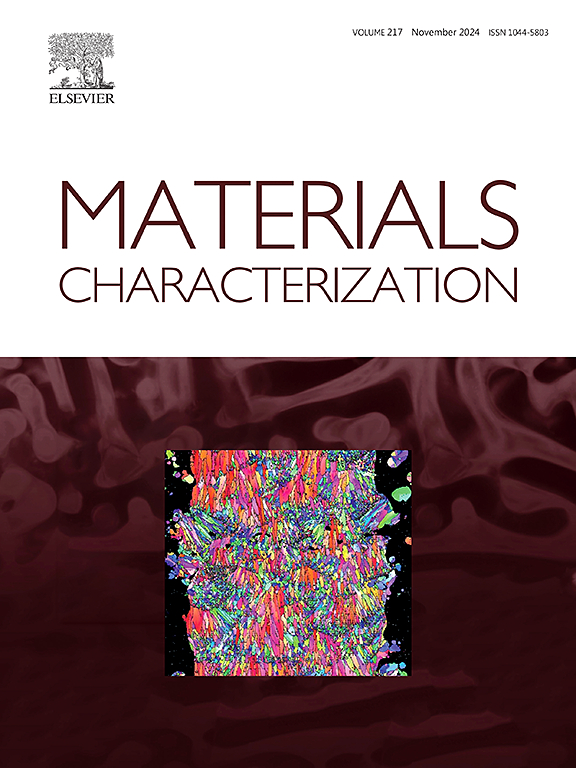Research on microstructural evolution, hardness, and electromagnetic shielding capabilities of Ni/Cu multilayered composites
IF 4.8
2区 材料科学
Q1 MATERIALS SCIENCE, CHARACTERIZATION & TESTING
引用次数: 0
Abstract
The low-speed accumulative roll bonding (ARB) process is an effective way to achieve metal-based composites with ultra-fine-grained layers. In the current study, the effect of ARB pass and the number of layers in composite stacking were studied in Ni-based and Cu-based composites. According to the findings, by increasing the ARB pass, the reinforcing layers were broken and distributed in the matrix. Also, the size of grains in Ni and Cu layers decreased. On the contrary, the hardness of Ni and Cu layers increased. Comparing pass 1 and pass 7 showed that there were 105 HV and 24 HV growth in hardness of Ni and Cu, respectively. Furthermore, the hardness profile of layers showed the highest growth near composite surfaces and interfaces. The variations of hardness values showed fluctuations after ARB pass 7. Additionally, the shielding efficiency increased due to the increased number of Ni/Cu interfacial barriers. The maximum values of EMI shielding were 55 dB in Ni-based composites and 59 dB in Cu-based composites, respectively. However, by increasing the layers in composite stacking, better distribution of reinforcing layers in the matrix and higher shielding efficiency were obtained while less grain refinement and less hardness growth were observed. The maximum EMI shielding values were seen in Ni/Cu/Ni/Cu/Ni/Cu/Ni and Cu/Ni/Cu/Ni/Cu/Ni/Cu composites while the highest hardness growth was seen in Ni/Cu/Ni and Cu/Ni/Cu composites.
求助全文
约1分钟内获得全文
求助全文
来源期刊

Materials Characterization
工程技术-材料科学:表征与测试
CiteScore
7.60
自引率
8.50%
发文量
746
审稿时长
36 days
期刊介绍:
Materials Characterization features original articles and state-of-the-art reviews on theoretical and practical aspects of the structure and behaviour of materials.
The Journal focuses on all characterization techniques, including all forms of microscopy (light, electron, acoustic, etc.,) and analysis (especially microanalysis and surface analytical techniques). Developments in both this wide range of techniques and their application to the quantification of the microstructure of materials are essential facets of the Journal.
The Journal provides the Materials Scientist/Engineer with up-to-date information on many types of materials with an underlying theme of explaining the behavior of materials using novel approaches. Materials covered by the journal include:
Metals & Alloys
Ceramics
Nanomaterials
Biomedical materials
Optical materials
Composites
Natural Materials.
 求助内容:
求助内容: 应助结果提醒方式:
应助结果提醒方式:


